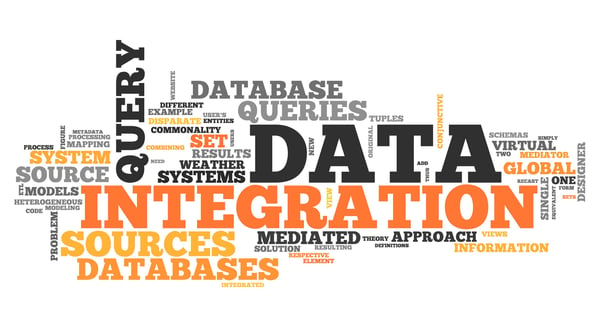In an increasingly digitalized world, data is a company's most valuable asset. However, it is all too often trapped in data silos, stand-alone systems, that are an obstacle to efficient data management. These isolated areas in a company's IT infrastructure make it difficult to smoothly exchange and integrate information between different departments and systems. This creates bottlenecks in data usage and analysis that impair operational efficiency. Read this post to find out how data silos originate and how you can successfully break them down.
What are data silos?
Data silos are separate areas where data is stored and managed in isolation. As a rule, this data is only available to a specific group, while the rest of the company has no or limited access. This segregation makes it difficult to use and integrate data efficiently.
How do they develop?
Data silos can be created intentionally or unintentionally. However, intentional data silos are rather rare and mainly occur when compliance requirements differ. Unintentional data silos usually arise due to organizational and technical considerations. These include:
- Disconnected departments. Before the emergence of digital transformation, creating individual processes and guidelines for each department was the norm. Despite digitalization, many companies still have departments that maintain their own way of working without taking account of how their efforts will affect the company as a whole.
- Incompatible technology. Some departments or business units use different tools and software for their daily work. This software is not always compatible, and older systems are not designed for data exchange. Silos may be so firmly established that they remain in place even after the standardization of software solutions.
- Lack of consistent data management. Without standardized data management, each department develops its own rules for handling data. As a result, data ends up in the relevant silos without adherence to a company’s compliance guidelines. As a result, data is neither stored in a legally compliant manner nor accessible to other team members.
- Competitive corporate culture. In some corporate cultures, departments work against each other instead of with each other. Their differing goals can clash, resulting in information and data being withheld.
Why are data silos a problem?

Companies urgently need to keep an eye on data silos and actively address them to prevent them from negatively impacting work processes. In addition, the larger a company becomes and the more data it collects, the more the silos become entrenched. This leads to problems that range from inaccurate data analysis and inadequate regulatory compliance to lack of business continuity.
The effects of data silos at a glance:
- They prevent executives from getting a comprehensive overview of the business. Without a complete understanding of business processes and performance, they have limited insight and cannot identify potential areas for improvement.
- There is minimal cross-team collaboration. Instead of pursuing common goals, teams focus on their own objectives. This severely restricts cross-departmental collaboration.
- Information is difficult to access. Employees can spend a lot of time searching for information that may already be out of date by the time it is found.
- Data integrity is compromised. Multiple versions of the same data cause version control issues and inaccurate reporting.
- By duplicating data in different locations, companies waste storage space and other resources in comparison to the efficiency of using a centralized data repository.
- Data silos are more vulnerable to cyberattacks because data is more likely to be inadequately protected.
How to break down data silos

Where data integration used to be difficult or required immense effort, tools and targeted measures now enable rapid information integration and smart data management including:
- Invest in a cloud-based data warehouse: A data warehouse offers users an organized scheme for data management. All relevant company data is brought together so that it can be accessed easily and centrally for analysis decision making. The cloud-based software enables a company’s IT infrastructure to be flexible and scalable as it grows.
- Create a company-wide data catalog: With the help of a data catalog, companies can gain an overview of data that was previously only available in non-digital form. It also makes sense to categorize existing data assets to classify and assess their relevance. The use of artificial intelligence and machine learning saves considerable time during cataloging.
- Foster cultural change and open communication: All employees should be made aware that interrupted data flows due to data silos can have serious consequences for the company's success. So, managers should communicate the benefits of data sharing and explain the potential problems data silos can cause. Leaders need to take responsibility for driving this cultural change.
The role of a document management system

The introduction of a powerful document management system (DMS) provides a central platform for managing data and supports the well-organized filing, searching and sharing of information, helping organizations to break down data silos and use their data efficiently.
- Centralization of documents and information. Instead of storing documents in different folders on the server, the DMS uses common criteria, and automated classification and indexing. The documents are saved in fully searchable digital files.
- Prevention of document loss. As soon as a document is transferred to the DMS, it is indexed. This makes it easy to find based on the text content and other terms such as the document type. In addition, every high-quality document management system employs optical character recognition (OCR), which enables scanning of paper documents and searching image files such as PDFs.
- Version control. Marking documents as "new", "final" or "final2.0" is not an effective way of communicating their status. Instead, a DMS relies on versioning, whereby all changes to a document are recorded and logged in detail.
- Collaboration. The software can be adapted to a company's work processes and map entire workflows. This makes it possible, for example, to automatically assign an invoice to the team member responsible for its approval and then send it back to the accounts payable department for further processing. All employees involved can view the document's status and identify bottlenecks.
Data silos are a challenge for companies that want to use their data efficiently. A targeted IT transformation and the use of a document management system helps companies break down these barriers and optimize data usage across the company.




